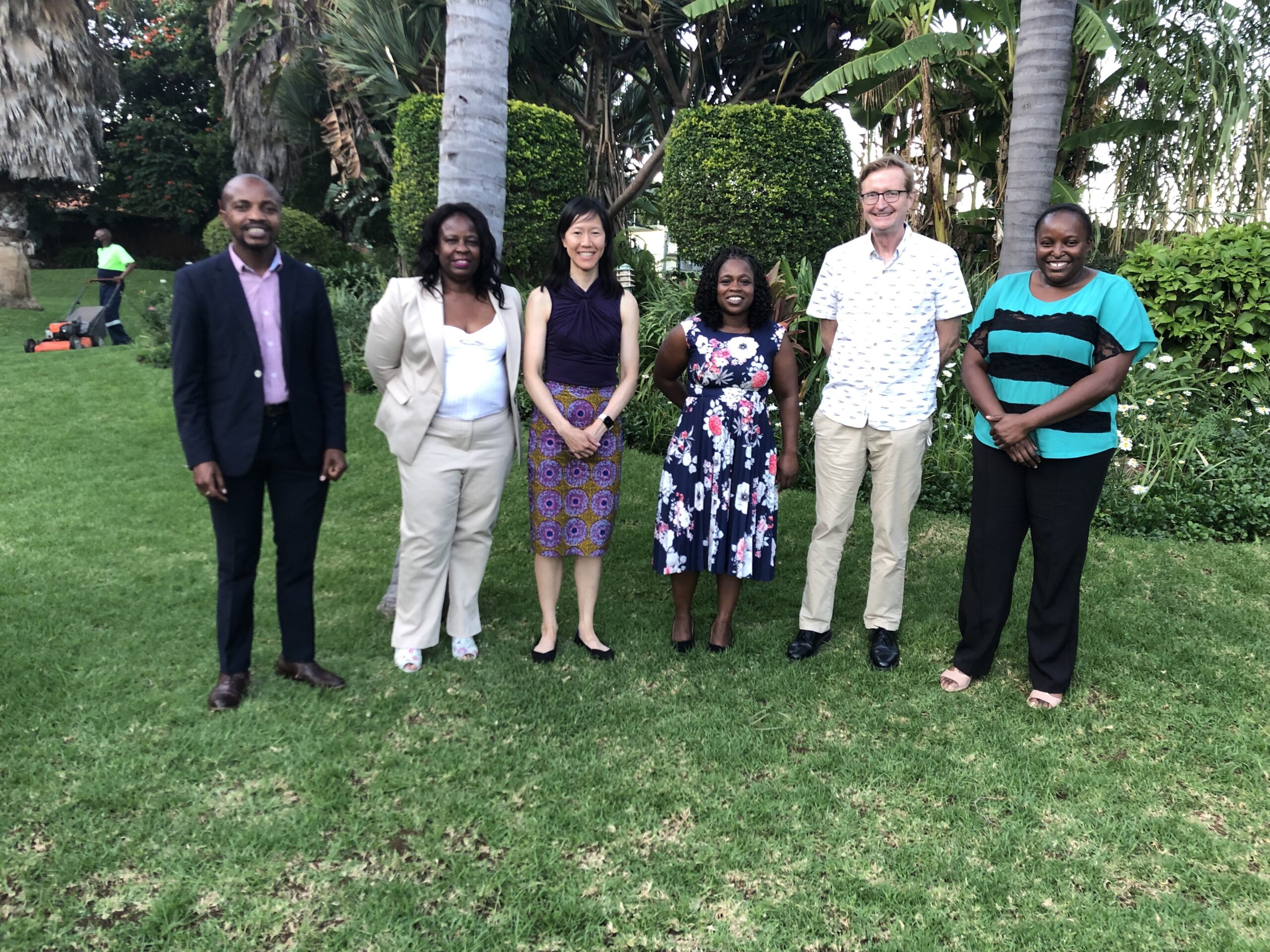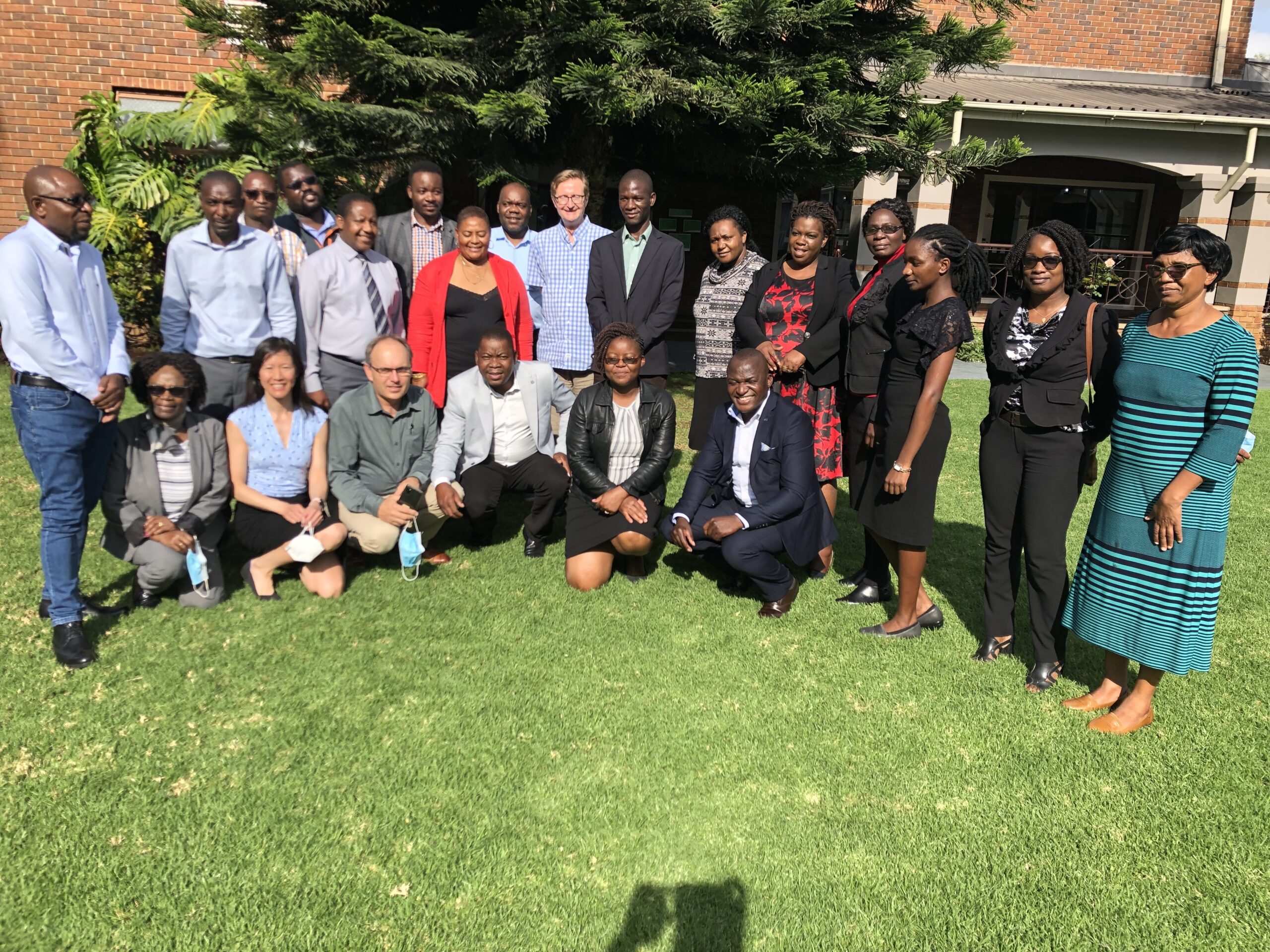Published: 04/29/2024
CIGH’s new executive director on strengthening health systems, building equitable partnerships, and empowering female leaders

Amanda Marr Chung, DrPH, is committed to strengthening health systems and fostering diverse leadership to meet the world’s most pressing health and equity challenges. She brings these passions to her new role as Executive Director at the Stanford Center for Innovation in Global Health. In this position, she works alongside Faculty Director Michele Barry, MD, to implement the center’s vision and goals.
Over the past two decades working in global health, Marr Chung has focused on capacity strengthening, leadership and management, and evaluation. At UCSF, she led a project in Zimbabwe to integrate male circumcision into routine primary care to prevent HIV.
Her experience spans the areas of immunizations, maternal and child health, HIV, eye health, and malaria in ten countries across Asia, Africa, and Latin America. She also launched the American Indian Sight Initiative for Seva Foundation. She co-developed a bottom-up systems change framework used by health programs in Eswatini, Namibia, and Zimbabwe and co-founded a South African non-profit organization to scale this work with her collaborators. An alumna of the WomenLift Health leadership journey, she’s also an advocate for advancing women’s leadership in global health.
We spoke with Marr Chung about her new role and initiatives to strengthen health systems, advance gender equity in global health, and create more equitable global health partnerships.
Can you share with us the personal journey and early experiences that have shaped your interest in global health?
My dad was a pediatric surgeon, so I’ve always been interested in health, recognizing that regardless of where people live and their income level, they have a right to achieve optimal health. Good health should not just mean physically functioning bodies, but mental and emotional wellness and access to high-quality care and prevention.
I was also inspired by my mom, who did oncology research during her graduate studies. I majored in ecology and evolutionary biology as an undergraduate. I took away from that an immense appreciation for biodiversity and the interconnectedness of people, animals, plants, and the planet. For my undergraduate thesis, I had the opportunity to conduct ethnobotany research alongside women from three Kenyan tribes. I realized I wanted to combine my interests in health, ecology, and working with people who had different perspectives and lived experiences to help reduce suffering and inequities that the most vulnerable communities confront.
What most excites or energizes you about your role at CIGH?
Our new Stanford African Scholars in Global Health (SASH) program is very exciting to me because it embodies a spirit of bidirectional collaboration that is fundamental to actualizing equitable global health partnerships. This shift has been a long time coming, and I’m so glad we’re at this point.
We expect our first cohort of eight fellows to join us in early 2025. At Stanford, these visiting African doctors will gain a skill they’ve identified as a need in their home institutions that will also make an impact on health outcomes in their countries. They will then receive additional funding to return home and implement a quality improvement project to implement that skill with mentoring from Stanford faculty.
I’d like to find funding to expand this program beyond Africa and build more reciprocal relationships such as these. I expect that the Stanford community will be so enriched by these fellows.

A lot of your work focuses on health systems strengthening/continuous improvement, with a focus on driving change from the bottom up. Can you talk about the power of this approach?
Consistent with fostering equitable global health partnerships, I believe the people who are best equipped to solve local problems are those closest to the work.
An example comes to mind from my work in Zimbabwe supporting district hospital teams in integrating a male circumcision program into primary care services. A remarkable female medical officer led one team that dramatically increased the number of circumcisions provided by their district during our project. But the team didn’t stop there. They then applied the skills they’d gained to address another serious challenge that their largest hospital faced.
This doctor’s district reported nine maternal deaths in 2021, the highest maternal mortality rate in the province. She knew how demoralizing and traumatic it was for the hospital staff every time a mother died, and she was determined to do something to improve the situation. She worked with her team to employ a quality improvement tool, called root cause analysis, to understand the drivers of this high mortality rate.
They identified two key problems: lack of a hospital blood bank and a shortage of labor and delivery drugs such as misoprostol. Without a blood bank, many mothers died of postpartum hemorrhage during the three-hour wait for blood to be retrieved from a bank 100 kilometers away. The doctor and her team successfully advocated for an onsite blood bank and required that the hospital maintain an adequate supply of misoprostol. With these relatively simple changes in place, the district reported three maternal deaths in the following year.
When health programs put local voices in the driver’s seat, elevate their needs, and empower them to come up with solutions to the challenges that they see as priorities, small changes can have a huge impact.

Some of your recent work has focused on implementing gender equity into malaria programs. Why is it so important to consider gender and elevate women’s leadership in the fight against malaria?
First, women are disproportionately impacted by malaria. Pregnant women with malaria are at higher risk for morbidity, mortality, stillbirth, miscarriage, and premature delivery. Malaria can also contribute to girls missing school, which can then lead to early marriage and childbearing. It’s important to ensure that data are collected and analyzed with both age and sex disaggregated so that we understand these unequal impacts. With that awareness, we can design programs that decrease the barriers that women and girls face to accessing prevention and treatment.
In terms of prevention — women are powerful allies. Overall, they have a higher awareness of how malaria spreads and are likelier to seek insecticide-treated nets than men. Empowering them to make decisions in their household can help ensure their family members receive treatment during the crucial 24-hour window. However, we need to change gender norms, which impact who gets to sleep under mosquito nets and whether women can travel safely on their own to get care without male accompaniment.
Like all other sectors, women working in the fight against malaria face difficulties being promoted or equitably paid, and the important work that community health workers contribute to prevention and treatment is usually uncompensated. If they are paid nominally, there is often no clear pathway to promotion. When women are put in leadership positions, they can prioritize women’s unique needs, so that we can create safe, hospitable working environments where women do not have to fear being sexually harassed or assaulted.
How has your participation in WomenLift Health’s Leadership Journey shaped your perspective on empowering women to strengthen global health systems?
I’ve benefited so tremendously from the program. It has enabled me to own the many facets of my identity, embrace authenticity, and use my privilege and power to enact change. It’s reiterated to me the importance of mentoring others, which I love doing, and modeling work-life integration and self-care. The most powerful thing about the program is the network of women leaders I am now connected to across three continents.
Elevating women leaders in global health requires transformative changes at multiple levels — individual, interpersonal, organizational, and societal. Women often juggle numerous caregiving responsibilities alongside their professional roles, pointing to the need for more equitable distribution of such duties between women and men. We also need male allyship to support putting women in leadership roles. I am profoundly grateful to my male mentors who willingly stepped back to afford me growth opportunities, such as lead authorship on publications and representing our work at conferences. At the organizational level, we need better pay transparency, supportive policies, and active allyship by both men and women in elevating women. More broadly, societal expectations around women need to be confronted and reshaped. It is critical to uphold diversity, especially in professional platforms like conference panels, executive boards, and professional societies, as such steps slowly but surely work to change norms.
I’m excited to continue my connection to WomenLift Health now that I’m at CIGH, where I’m collaborating on a research project that explores the role of male allyship in advancing academic women leaders in global health.